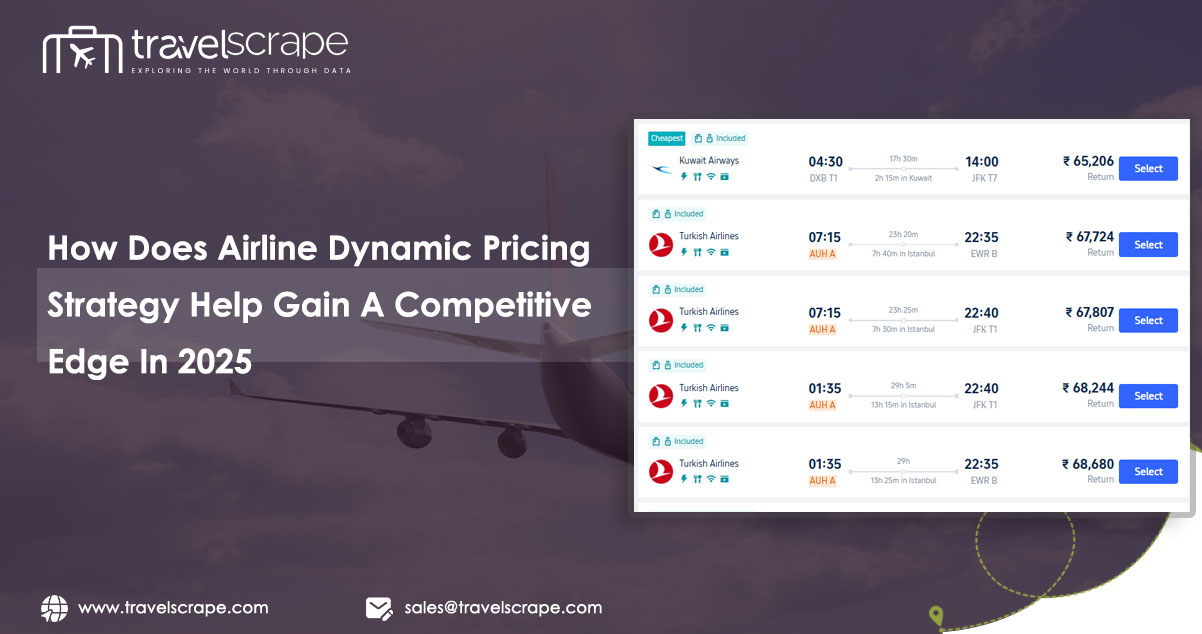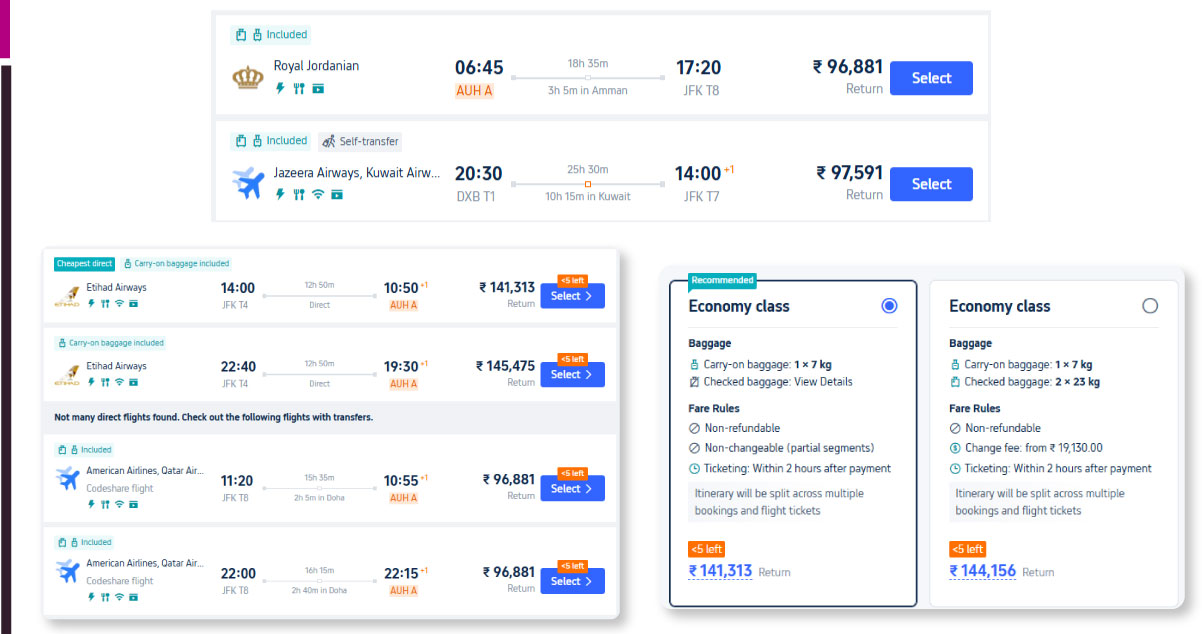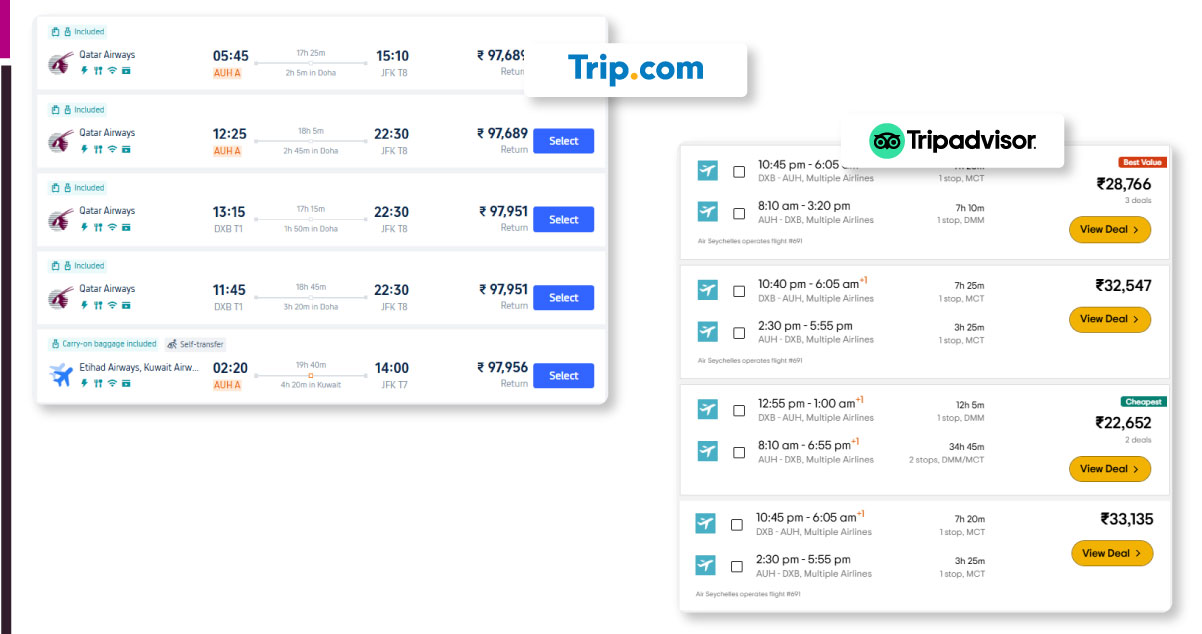How Does Airline Dynamic Pricing Strategy Help Gain A Competitive Edge In 2025?

Introduction
In 2025, the Airline Dynamic Pricing Strategy is key for travel businesses that aim to unlock smarter pricing, boost sales, and outperform competitors. The aviation industry has transformed dramatically over the past decade, with technology reshaping how airlines set prices and compete in an increasingly saturated market. Today's travelers expect fair deals, while airlines strive to maximize revenue through sophisticated pricing mechanisms that respond to market conditions in real-time.
Airline pricing has shifted from fixed fares to dynamic, intelligent models influenced by demand, competition, and seasonal trends. This shift isn't just technological—it's a strategic change in revenue and customer management. Access to an Airline Price Change Dataset is essential for airlines, travel platforms, and analytics firms to stay competitive and informed in this evolving travel landscape.
Understanding Modern Airline Pricing Evolution

The traditional approach to airline pricing involved setting fixed fares weeks or months in advance, with limited flexibility to respond to market changes. This method often resulted in lost revenue opportunities and suboptimal capacity utilization. Modern travel companies have revolutionized this approach by incorporating Airfare Pricing Strategies, including real-time data analysis, predictive modeling, and automated decision-making processes.
Contemporary pricing systems analyze hundreds of variables simultaneously, including:
- Historical booking patterns and seasonal trends
- Competitor pricing analysis and market positioning
- Weather forecasts and operational disruptions
- Special events and economic indicators
- Customer segmentation and booking behavior
The integration of advanced systems allows airlines to leverage Real-Time Flight Pricing Data to make pricing adjustments within minutes rather than days or weeks. This responsiveness is essential for maintaining competitiveness in today's fast-paced travel environment. Airlines that fail to adapt to these rapid changes often lose market share to more agile competitors.
The shift toward dynamic pricing has also significantly changed customer expectations. Travelers now anticipate that prices will fluctuate and often employ various strategies to secure the best deals. This has created a complex interplay between airline pricing algorithms and consumer behavior, where each side continuously adapts to the other's strategies.
The Role of Artificial Intelligence in Modern Pricing
Machine learning algorithms have revolutionized the travel industry by processing vast amounts of data to identify patterns and predict optimal pricing strategies with unprecedented accuracy. Implementing AI In Airline Pricing has emerged as the cornerstone of competitive advantage, enabling systems to learn from every transaction and continuously refine their understanding of market dynamics and customer behavior.
Advanced AI systems can segment customers based on several key factors:
- Booking behavior patterns and timing preferences
- Price sensitivity analysis and purchasing power
- Travel frequency and destination preferences
- Loyalty program engagement and status levels
- Historical transaction data and payment methods
The sophistication of these systems has reached a point where they can predict demand fluctuations days or weeks in advance, enabling proactive pricing adjustments. Airlines utilizing AI in Airline Pricing can also extend their capabilities to competitive intelligence, where systems monitor competitor pricing in real-time and automatically adjust fares to maintain market position while optimizing profitability.
This automation empowers airlines to adapt to market shifts faster than manual methods, leveraging the Global Flight Schedule Dataset for real-time insights. With AI’s continuous learning, pricing precision steadily improves, securing a long-term competitive edge.
Data Collection and Processing Technologies

The foundation of effective dynamic pricing lies in comprehensive data collection and processing capabilities that enable real-time market analysis. Modern travel companies rely heavily on Web Scraping For Airline Data to simultaneously gather competitive intelligence and market insights from multiple sources.
These advanced data collection systems monitor various information sources:
- Airline websites and booking platforms
- Global distribution systems and travel agencies
- Social media sentiment and customer reviews
- Economic indicators and market forecasts
- Weather data and operational metrics
Modern systems incorporating Airfare Price Monitoring Tools go beyond simple price tracking to provide comprehensive market analysis. These sophisticated platforms aggregate data from hundreds of sources, including airline websites, global distribution systems, and third-party booking platforms. The resulting datasets provide insights into pricing trends, market positioning, and competitive dynamics that inform strategic decision-making.
Real-Time Flight Data Extraction capabilities have become increasingly sophisticated, capturing not just pricing information but also availability, route performance, and operational metrics. This comprehensive data collection enables airlines to understand the full context of market conditions and make more informed pricing decisions that balance profitability with customer satisfaction.
Revenue Management System Integration
Modern airlines have evolved their systems to incorporate dynamic pricing as a core functionality rather than an add-on feature. These integrated platforms combine traditional revenue management principles with Airline Revenue Management Systems, utilizing real-time market data and predictive analytics to optimize pricing across all distribution channels.
The integration process typically includes several key components:
- Real-time data feeds from multiple sources
- Predictive analytics and machine learning algorithms
- Automated pricing rule engines and approval workflows
- Performance monitoring and optimization tools
- Integration APIs for third-party systems and partners
Incorporating Airline Pricing Data Aggregation within revenue management systems provides a unified view of market conditions and internal performance metrics. This holistic approach enables airlines to balance capacity optimization with pricing strategy, ensuring that both load factors and profitability targets are achieved without compromising customer experience.
Modern revenue management systems also incorporate feedback loops that continuously improve pricing accuracy. These systems learn and adapt their algorithms to changing market conditions and customer behaviors by analyzing the outcomes of pricing decisions and comparing them with predicted results.
Competitive Intelligence and Market Analysis

Success in dynamic pricing requires a comprehensive understanding of the competitive landscape and market dynamics beyond simple price comparisons. Airlines and travel companies now rely on Data-Driven Insights For Airline Pricing to identify market opportunities, assess competitive threats, and optimize their positioning strategies effectively.
Key areas of competitive analysis include:
- Competitor capacity allocation and route strategies
- Pricing patterns and promotional activities
- Customer acquisition and retention strategies
- Operational performance and service quality metrics
- Market share trends and growth strategies
Automated Fare Monitoring Systems continuously monitor market conditions, alerting decision-makers to significant changes in competitive pricing or market dynamics. These sophisticated platforms can simultaneously track thousands of routes and competitors, providing comprehensive market coverage that would be impossible through manual monitoring efforts.
The depth of competitive intelligence available through modern systems enables airlines to anticipate competitor actions and proactively adjust their strategies. This predictive capability is crucial for maintaining market position and identifying opportunities for expansion or differentiation in increasingly competitive markets.
Advanced Analytics and Data Processing
The complexity of modern airline pricing requires sophisticated analytical capabilities to process and interpret vast amounts of market data effectively. Travel companies increasingly depend on Web Scraping For Airline Pricing Analytics to gather information from diverse sources and formats for comprehensive market analysis.
Travel Data Intelligence platforms combine multiple data streams to create comprehensive market insights that inform strategic decision-making. These advanced systems process real-time information alongside historical trends, seasonal patterns, and external factors to provide actionable intelligence for pricing optimization.
The analytical process typically involves several sophisticated techniques:
- Pattern recognition and trend analysis algorithms
- Predictive modeling and forecasting systems
- Customer segmentation and behavior analysis
- Competitive positioning and market share analysis
- Revenue optimization and profitability modeling
Integrating Global Flight Price Trends Dataset information enables airlines to understand their pricing position within broader market contexts. This comprehensive perspective is essential for strategic planning and identifying opportunities for market expansion or positioning adjustments that maximize competitive advantage.
Operational Excellence Through Data Integration
Modern airlines leverage comprehensive data integration strategies to maintain databases of market information that support operational decision-making beyond pricing. Airline Data Scraping Services provide access to extensive market intelligence that optimizes route planning, capacity allocation, and competitive positioning strategies.
The availability of comprehensive Global Flight Schedule Dataset information enables airlines to analyze scheduling patterns and identify opportunities for competitive advantage through strategic timing and routing decisions. This operational intelligence extends beyond pricing to encompass customer experience and operational efficiency.
Integration of detailed market data provides several operational benefits:
- Route optimization and capacity planning
- Competitive scheduling and timing strategies
- Resource allocation and operational efficiency
- Customer experience enhancement opportunities
- Market expansion and growth strategy development
The comprehensive Airline Price Change Dataset information enables airlines to analyze pricing elasticity, demand response patterns, and optimal pricing strategies for different market segments and conditions. This analytical capability is essential for maximizing revenue while maintaining customer satisfaction and competitive positioning.
Integration of Airport Amenities Dataset information provides additional context for pricing decisions, particularly for premium services and differentiated offerings. Understanding the whole value proposition available to customers enables more sophisticated pricing strategies that account for the complete travel experience.
Strategic Implementation and Market Positioning

Successful implementation of dynamic pricing strategies requires careful consideration of market positioning and customer perception, balanced by multiple business objectives. Flight Price Data Intelligence provides the comprehensive insights necessary to optimize revenue while maintaining customer satisfaction and market competitive positioning.
The sophistication of modern pricing systems enables airlines to implement complex strategies that account for multiple objectives simultaneously:
- Revenue maximization and profitability optimization
- Market share growth and competitive positioning
- Customer satisfaction and loyalty enhancement
- Operational efficiency and resource utilization
- Brand positioning and market differentiation
Effective dynamic pricing implementation also requires ongoing monitoring and adjustment to maintain strategic effectiveness. Market conditions change rapidly, and pricing strategies must evolve to align with business objectives and market realities. Continuously analyzing pricing performance and market response ensures that strategies deliver sustainable competitive advantage.
How Travel Scrape Can Help You?
We provide comprehensive data solutions that power effective Airline Dynamic Pricing Strategy implementation. Our advanced capabilities enable travel businesses to access the information and insights necessary for competitive success in today's dynamic market environment.
- Comprehensive Data Collection: We provide access to real-time pricing data from hundreds of airlines and booking platforms worldwide, ensuring you have complete market visibility for informed decision-making.
- Advanced Analytics Platform: Our sophisticated analytical tools process vast amounts of Airfare Pricing Strategies data to identify trends, opportunities, and competitive threats that impact your business performance.
- Custom Intelligence Solutions: We develop tailored data solutions that address your specific business requirements, whether you need competitive monitoring, market analysis, or operational intelligence.
- Real-Time Monitoring Systems: Our Automated Fare Monitoring Systems provide continuous surveillance of market conditions with instant alerts for significant changes that require immediate attention.
- Integration Support: We offer seamless integration with existing revenue management and pricing systems, ensuring that our data solutions enhance rather than complicate your operational processes.
- Strategic Consulting: Our team of industry experts provides strategic guidance on implementing data-driven pricing strategies that maximize competitive advantage and profitability.
Conclusion
Airline pricing is undergoing a significant transformation in 2025, driven by dynamic strategies that redefine how travel businesses compete. With Airline Dynamic Pricing Strategy solutions powered by AI, real-time data, and advanced analytics, companies can now unlock new revenue optimization and customer satisfaction levels.
The future belongs to organizations that can effectively leverage data intelligence to understand market dynamics, anticipate customer needs, and respond rapidly to changing competitive conditions. Travel Aggregators and other travel industry participants must invest in robust data collection and analysis capabilities to remain competitive. The complexity of modern markets requires sophisticated Travel Industry Web Scraping solutions that provide comprehensive market intelligence and competitive insights.
Ready to transform your pricing strategy and gain a competitive edge in 2025? Contact Travel Scrape today to discover how our advanced data solutions can optimize your pricing strategies and outperform your competition.

